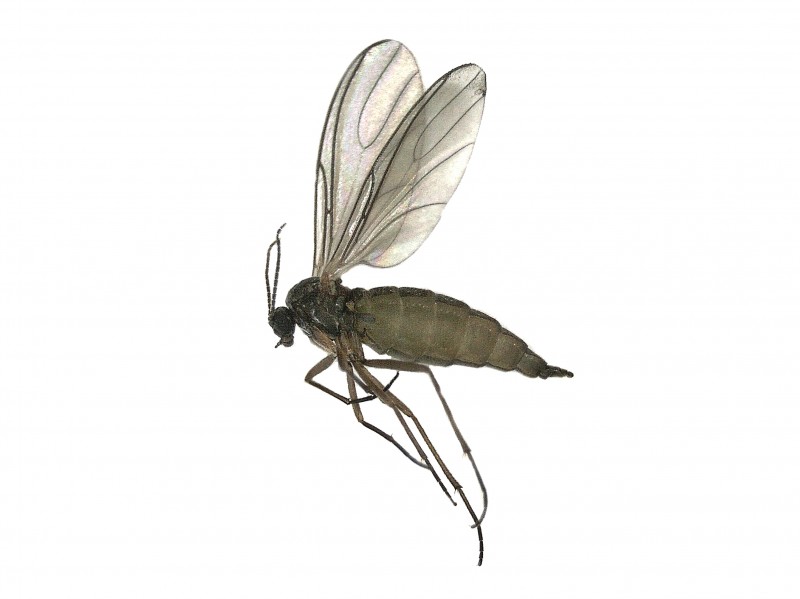FIND YOUR LOCAL
ARROW SERVICE CENTER
Orfelia and Bradysia
Fungus gnats are often mistaken for fruit flies or drain flies. They typically infest soil, potting mix, and other sources of organic decomposition. You can often find them near indoor plants. Though typically considered a nuisance in large numbers, fungus gnats are occasionally pollinators of plants and carriers of mushroom spores.

| Color | Dark brown/black |
| Legs | 6 |
| Shape | |
| Size | Length of 1.5-3 mm (0.06-0.1 inch) |
| Antennae | True |
Fungus gnats are dark and delicate-looking. They are similar in appearance to mosquitoes but usually much smaller. Adult fungus gnats have slender legs and segmented antennae that are longer than their head. You can identify them by their light gray or clear-colored wings. Larvae have a shiny black head and an elongated, whitish-to-clear, legless body.
Though fungus gnats are often found around live plants, they don’t feed on leaves, stems, fruits, or flowers. Larvae prefer to feed on fungus and organic matter in the soil. Sometimes they will chew on roots which may lead to plant damage.
Adult fungus gnats live about eight days, and their entire life cycle lasts only about 25 days. The cycle starts with adult females laying eggs in damp soil. Eggs are incubated for about three days. Then larvae complete their development in about 10 days. Afterward, fungus gnat pupae become adults about four days later.
Fungus gnats usually get into homes by flying inside or from infested plants brought inside the house. Fungus gnats are also attracted to damp soil, so make sure you properly store potting soil before and during use.
Most fungus gnats spend their life cycle in the larva and pupa stage buried in organic matter or soil. If you treat soil during those life stages, most adult fungus gnats will disappear. The presence of fungus gnats is often an indication of overwatering. Look for adult fungus gnats resting on plants, soil, windows, or walls to identify the source of your infestation. If you do have an infestation, you can use yellow sticky traps to catch adults. If that does not work, place chunks of raw potato in pots with the non-peeled side facing down. Severely infested potted plants may need to be re-potted and the infested soil discarded.
Follow these steps to control fungus gnats:
To prevent fungus gnats from returning, follow these steps:
If your fungus gnat infestation continues, contact Arrow Exterminators for a professional pest control plan.
After you submit the information below, a trained professional in your area will get in touch within 1-2 business days to set up a date & time that is convenient for you.